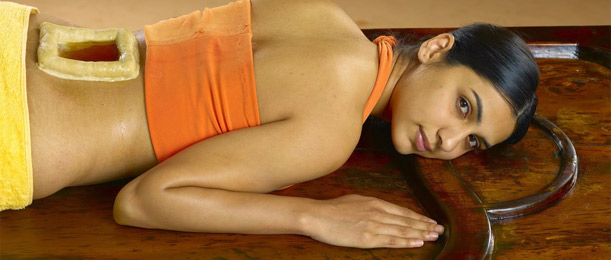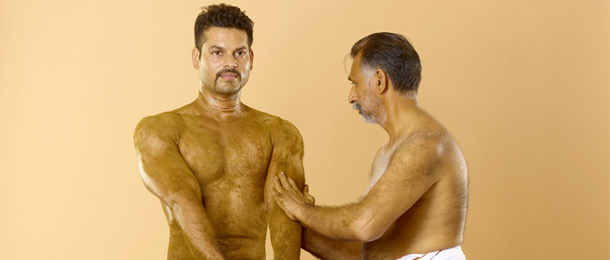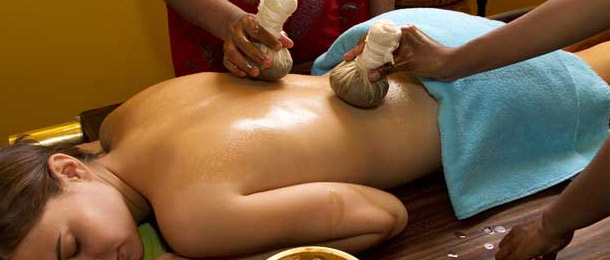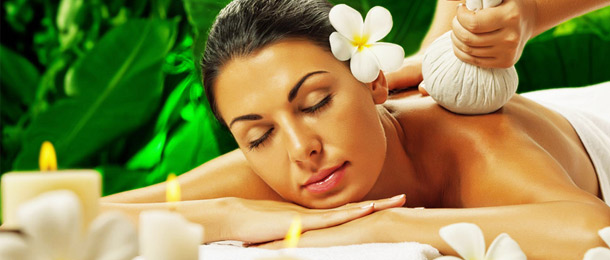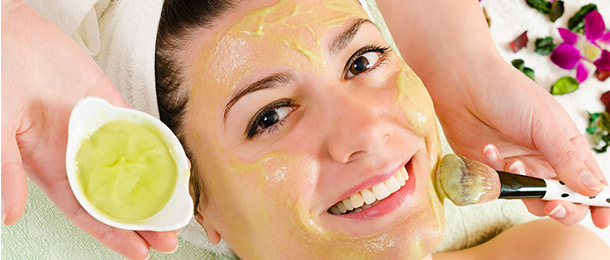Vamana is the unique procedure of eliminating the Doshas from the body through
the oral route by way of induction of vomiting. Kapha Dosha, the third among the
three Doshas is best eliminated by this procedure. The forcible expulsion of
undigested Pitta and Kapha through the upper root is known as Vamana by
definition. To begin with the client is treated with Oleation and Fomentation
procedures, and is followed by the induction of vomiting. The client is
then subjected to samsarjana karma to complete the procedure. The whole
procedure including the preoperative procedure as well as post-operative
procedure is called as Vamana karma.
Elimination of the vitiated Dosha from a route nearest to the vitiated site is the
general rule. Accordingly if the accumulation of Dosha is observed in the upper
half of the body, it is best eliminated by the upper i.e. oral route. To be more
precise if the accumulation of Dosha is present in the gastric, it is best eliminated
by the vamana karma. This procedure is said to be more efficacious in clearing the
accumulation of Kapha Dosha. Best results from vamana karma
may be achieved if administered during the spring. Following list reveals the
conditions that may be treated by vamana karma.
Excretion of faecal matter and other accumulation of the Dosha through the rectal
route is known as Virecana. Expulsion of the waste from the body is the verbal
meaning of the word Virecana. Therefore all purificatory procedures are referred by
the name Virecana. In the words like Sirovirecana, Sukra Virecana mutra Virecana,
the word Virecana means mere expulsion. Conventionally this term refers to
excretion of the waste through the rectal route. Among the three doshas the Pitta
Dosha is best eliminated by this procedure. If the Kapha Dosha is accumulated in
the Pitta sthana this is also best eliminated by the Virecana procedure. Unlike
Vamana procedure this does not produce any embracement to the client and
hence easy to administer. Depending upon the amount of elimination of Dosha
Virecana is categorised into Mridu, Madhya and Tikshna. There are other
classifications too mentioned by pioneers of the field overtime such as,
Anulomana, Sramsana, Bedhana, etc.
Administration of Basti predominantly containing herbal decoction is known as Kasaya Vasti.
Administration of medicated oil or other fat through the rectal route in a prescribed
dose is called as Anuvasana basti. Depending upon the variation in the amount of
oil administered it is also known by the name Sneha basti, snihika basti or matra
basti. The details of the same is discussed earlier. Anuvasana basti may be
administered alone or in combination with niruha basti. The time of administration
of the basti is not uniform in different seasons. Before planning the anuvasana
basti one should note the following points. Client should be thoroughly examined
to see that he is not suffering from any illness in which anuvasana basti is
contraindicated. If the dominance of the vitiated Kapha Dosha is observed in any
client the anuvasana basti is not ideal for administration. During the cold seasons
anuvasana basti is administered during the day time. During the hot seasons the
anuvasana basti is administered during the night hours. Anuvasana basti is always
given immediately after the meals.
Administration of the medicines through nasal route is known as Nasya. As this is
the nearest root, the diseases related to head is best treated by this procedure.
Sirovirecana, Sirovireka and Murdhavirecana are the other names of this
procedure. Depending upon the composition of the herbs used in the medication
as well as variation in the pharmacological action the Nasya is classified into
different types. The procedure of dropping the medicated oil into the nostrils is
known by the name Navana Nasya. In Avapida Nasya herbs are pounded into a
paste and then is squeezed to extract the juice which is dropped into the nostrils.
In Dhmapana Nasya the herbs are in a fine powder form and is blown into the
nostrils. Smoke emitting from burning the herbal medicines is breathed through
the nostrils and is known as Dhuma Nasya. Medicated oil when dropped into the
nostrils in a small and specific dose is known as Prathimarsha Nasya. And this
Nasya is described as the most convenient form of Nasya as it does not lead to
any discomfort or complications.



